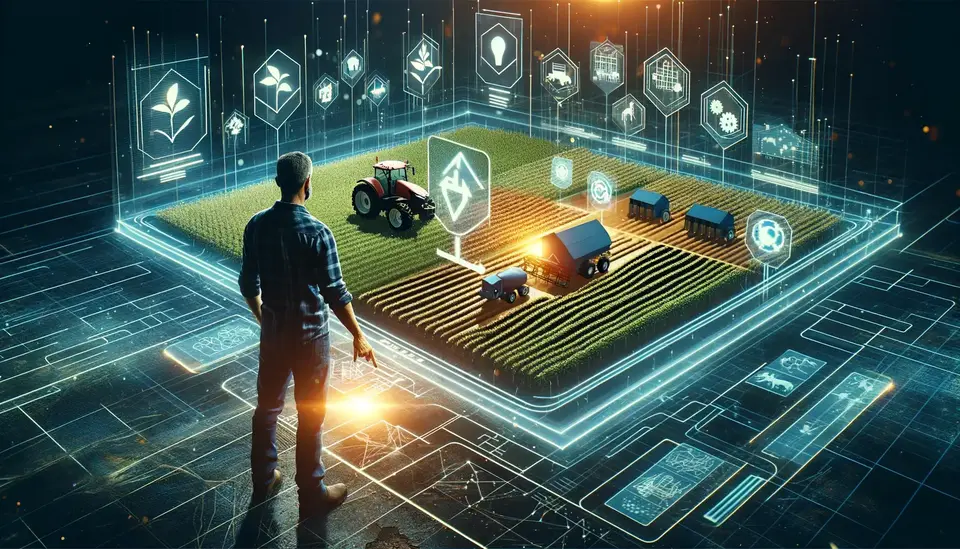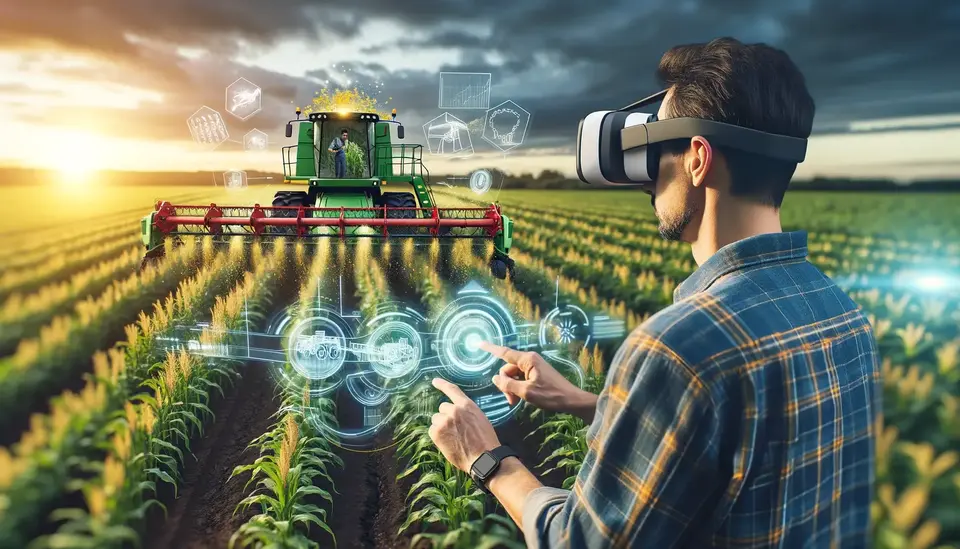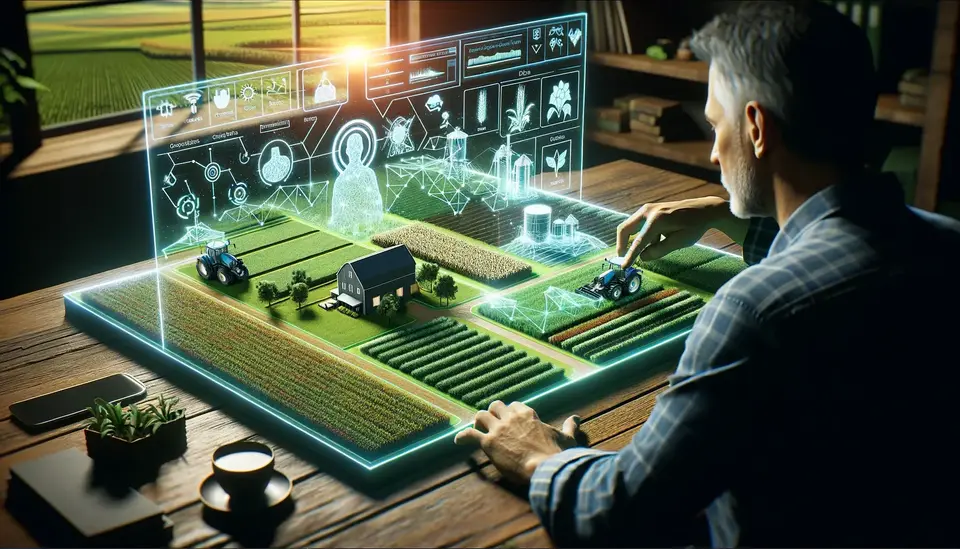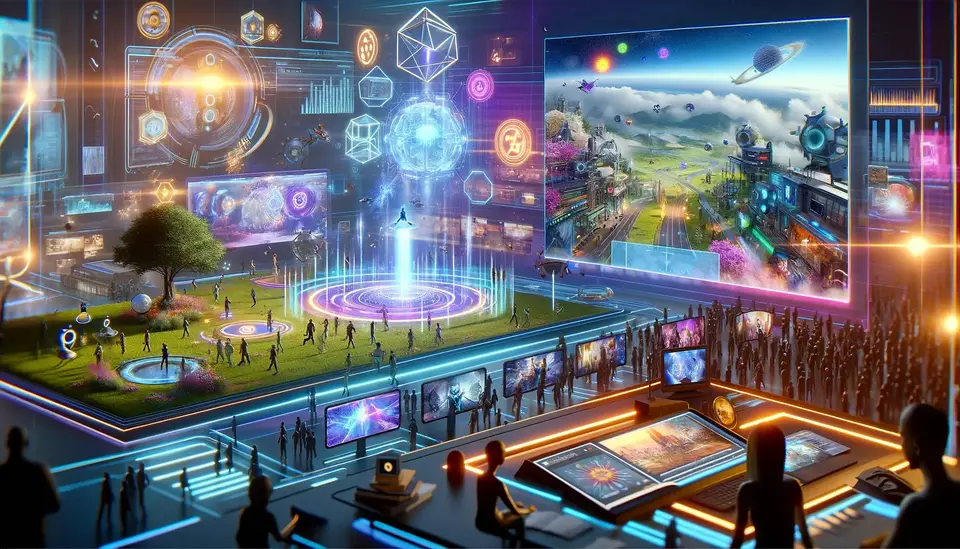Real Examples and Use Cases of Metaverse in Agriculture
Posted on January 28, 2024 9 minutes 1809 words
Table of contents
- Introduction
- Understanding the Metaverse in Agriculture
-
Real-World Applications and Case Studies
- Virtual Reality Farming
- Virtual Reality Training for Farming & Agriculture Machinery
- Virtual Reality Curriculum in Agriscience Education
- Drone Technology Combined with VR in Agriculture
- AR for Data Visualization and Training in Agriculture
- AgriGeo Platform for Agricultural Data Integration
- Digital Twin for Farm Planning
- Benefits and Challenges
- The Future of Farming with Metaverse
- Conclusion
Introduction
The term ‘Metaverse’ often conjures images of futuristic, digital worlds, predominantly associated with gaming and social media. However, its implications extend far beyond, seeping into diverse sectors including agriculture. This might come as a surprise to many, as agriculture is typically viewed through a traditional lens. But with rapid technological advancements, the integration of Metaverse technologies in farming is not just a distant dream, but a blossoming reality.
Understanding how the Metaverse revolutionizes agriculture is crucial, especially as we grapple with global challenges like food security and sustainable farming practices. This blog post aims to demystify the concept of the Metaverse in agriculture, presenting real-world applications and case studies that illustrate its transformative potential. From virtual reality (VR) farming simulations to augmented reality (AR) in crop management, these technologies are redefining ‘Smart Farming Solutions.’ As we delve into these innovative realms, it becomes clear that the future of farming is not just about tractors and fields, but also about pixels and digital landscapes. Welcome to the era of ‘Digital Agriculture Trends,’ where farming meets the Metaverse.

Understanding the Metaverse in Agriculture
The Intersection of Virtual Worlds and Farming Fields
At its core, the Metaverse is an expansive network of 3D virtual worlds, primarily driven by technologies like Virtual Reality (VR), Augmented Reality (AR), and Artificial Intelligence (AI). In the realm of agriculture, this technological convergence paves the way for what we term as ‘Agricultural Technology’ or ‘AgriTech.’ It’s a digital revolution that’s transforming the way we view, interact with, and manage farming practices.
Virtual Reality Farming
Imagine donning a VR headset and walking through a digital replica of your farm. VR in agriculture offers this immersive experience, enabling farmers and agricultural professionals to simulate various farming scenarios, test new techniques, and train workers in a risk-free environment. This aspect of the Metaverse transcends geographical boundaries, allowing for a global exchange of farming knowledge and practices.
Augmented Reality in Crop Management
AR brings an additional layer of information to the real world. Farmers can use AR glasses or apps to gain real-time data about their crops, soil conditions, and weather patterns. This immediate access to actionable data enhances decision-making and operational efficiency, marking a significant shift in ‘Smart Farming Solutions.’
Artificial Intelligence and Predictive Analytics
AI’s role in the Metaverse-driven agriculture sector is pivotal. It aids in analyzing vast amounts of data from various sources, offering predictive insights into crop yield, pest control, and resource management. This integration of AI in agriculture aligns with the broader ‘Digital Agriculture Trends,’ setting the stage for more informed and precise farming.
In summary, the Metaverse in agriculture is not a mere technological addition but a paradigm shift in how we perceive and execute farming operations. This integration heralds a new age of efficiency, sustainability, and global collaboration in agriculture.
Real-World Applications and Case Studies
The agricultural sector is increasingly embracing cutting-edge technologies like VR, AR, and digital twins. These tools are transforming traditional farming practices, offering innovative solutions for training, data analysis, and farm management. Let’s explore some real-world applications and case studies that showcase the impact of these technologies in agriculture.
Virtual Reality Farming
FarmVR, an Australian initiative, stands out as a leading example in the application of virtual reality (VR) in agriculture. They offer various virtual reality experiences and environments that enhance agricultural education, marketing, and productivity. Their services include creating immersive experiences for staff training, biosecurity, and safety in the agricultural industry. FarmVR has developed a range of virtual tours and experiences, such as cattle, sheep, and dairy virtual tours, along with pig and wool experiences. These immersive technologies are used to teach people about the origins of their food and inspire careers in agriculture, food, and fiber. They create custom virtual reality productions for their clients, enhancing education in the agriculture industry
Virtual Reality Training for Farming & Agriculture Machinery
A comprehensive VR training program for agricultural equipment has been developed by Queppelin, providing immersive training in real-world agricultural scenarios. This program covers a variety of conditions such as different weather, soil types, and machinery. The use of this training has significantly increased trainees’ confidence in applying skills learned through VR, marking a substantial improvement in learning efficiency and effectiveness in the agricultural sector.

Virtual Reality Curriculum in Agriscience Education
The University of Tennessee Institute of Agriculture (UTIA) is conducting a project to analyze the benefits of virtual reality (VR) in agriscience education. This project involves creating the Agriscience Metaverse Academy, a program that brings together agriscience educators from Tennessee and Nebraska. The educators receive training on integrating VR technology into their classes and create curriculum utilizing the metaverse. This study aims to determine the impact of VR learning on agricultural literacy and student interest in agricultural careers. The project is funded by a USDA-NIFA grant and is led by UT professors Tyler Granberry, Jamie Greig, Taylor Ruth, and Nathan Conner from the University of Nebraska-Lincoln.
Drone Technology Combined with VR in Agriculture
Innovations in drone technology have significantly enhanced agricultural operations, with some systems now integrating VR headsets for remote control. These drones are utilized for various tasks, including field monitoring, pesticide application, and even assisting in pollination processes. The technology allows for real-time monitoring through high-definition live feeds, enhancing field and livestock surveillance. Precision in pesticide spraying is another key benefit, as drones can target specific areas, reducing chemical dispersion and contamination risks. Additionally, drones like ‘Plan Bee’ and Dropcopter aid in pollination, mimicking natural processes to support crop growth. However, using VR for drone control in agriculture requires technical knowledge and can be influenced by weather and data management challenges.
AR for Data Visualization and Training in Agriculture
AR technology is being increasingly utilized in agriculture for data collection and visualization, scenario simulation, and training. Farmers can leverage AR to optimize production, simulate soil and crop management scenarios, and operate agricultural machinery in a virtual environment. This approach significantly enhances the training of future farmers and field technicians, minimizing risks and promoting efficient farming practices.
AgriGeo Platform for Agricultural Data Integration
E-Geos’ AgriGeo Platform exemplifies the practical application of metaverse technologies in agriculture. The platform uses multiple data sources and sensors to analyze soil quality, offering vital information to farmers for land improvement. By employing this method, significant reductions in water and energy consumption have been achieved, showcasing the efficiency and sustainability of such digital solutions in agriculture.
For more detailed information, you can visit the ISAM article on agriculture and the metaverse. This resource provides valuable insights into the practical applications and benefits of AR and the AgriGeo Platform in modern agriculture.
Digital Twin for Farm Planning
The concept of digital twins is being applied in agriculture to create virtual replicas of farms for efficient planning. This technology enables farmers to visualize the impact of new equipment on farm efficiency before making purchases. It also allows for the simulation of various harvesting strategies, revolutionizing farm planning and management.
The integration of VR, AR, and digital twin technologies in agriculture is a testament to the sector’s evolution. These examples illustrate their significant contributions to farming efficiency, education, and sustainability.
Benefits and Challenges
Navigating the Pros and Cons of Metaverse in Agriculture
The integration of Metaverse technologies in agriculture presents a plethora of benefits, but it’s also accompanied by certain challenges that need addressing.
Benefits: A Leap Towards Efficient and Sustainable Farming
- Enhanced Precision and Efficiency: Metaverse technologies like VR and AR provide farmers with detailed insights into their crops and farming conditions, leading to more precise and efficient farming practices.
- Risk Reduction: VR simulations allow for experimentation and training in a controlled environment, reducing risks associated with real-world farming.
- Global Collaboration and Knowledge Sharing: The Metaverse facilitates a global platform for farmers and experts to share knowledge and best practices, transcending geographical limitations.
Challenges: Overcoming the Hurdles on the Digital Farm
- Accessibility and Cost: One of the primary challenges is the accessibility and affordability of these technologies, especially for small-scale farmers or those in developing regions.
- Technical Know-How: The requirement for technical expertise to operate and maintain Metaverse technologies can be a barrier for some farmers.
- Data Privacy and Security: As with any digital technology, concerns around data privacy and security remain paramount, requiring robust solutions to protect sensitive agricultural data.
While the benefits of integrating the Metaverse in agriculture are compelling, addressing these challenges is crucial for its widespread adoption. It’s about striking the right balance between technological advancement and practical applicability, ensuring that the future of farming is both innovative and inclusive.
The Future of Farming with Metaverse
Envisioning Tomorrow’s Farms: The Metaverse’s Role in Shaping Agriculture
The integration of Metaverse technologies in agriculture is not just a fleeting trend; it’s a pivotal development that is set to redefine the future of farming.
Predictions for the Metaverse in Agriculture
- Advanced Farming Simulations: Future advancements in VR could lead to more sophisticated farming simulations, allowing for even more detailed and realistic planning, training, and experimentation in virtual environments.
- Wider AR Application: As AR technology becomes more accessible, its application in agriculture could expand significantly, offering real-time, actionable data to farmers worldwide, regardless of their location or scale of operations.
- AI-Driven Predictive Analytics: The role of AI in agriculture will likely grow, providing farmers with predictive analytics for better crop yield, efficient resource management, and sustainable farming practices.
Implications for Global Agriculture
The Metaverse has the potential to play a crucial role in addressing global agricultural challenges. By offering innovative solutions for food security, resource management, and climate change adaptation, these technologies could revolutionize the way we approach farming, making it more sustainable and resilient.
As we move towards this digital agricultural future, it’s essential for stakeholders – from tech developers to policymakers and farmers – to collaborate. Embracing the Metaverse in agriculture could lead to a more interconnected, informed, and sustainable global farming community, paving the way for the ‘Future of Farming with Metaverse.’

Conclusion
Embracing a Digital Revolution in Agriculture
As we have explored in this blog post, the Metaverse is not just a concept confined to the realms of gaming and social media. Its foray into agriculture is proving to be a game-changer, offering innovative solutions and transforming traditional farming practices. From virtual reality farming simulations to augmented reality in crop management, the integration of these technologies is paving the way for smarter, more efficient, and sustainable farming practices.
The journey of integrating the Metaverse in agriculture is just beginning. It’s a path filled with immense potential and challenges alike. As we continue to witness the evolution of ‘Digital Agriculture Trends,’ it’s crucial for everyone involved – from farmers to technologists and policymakers – to collaborate and innovate. The future of farming with the Metaverse holds exciting prospects, and embracing this digital revolution could redefine global agriculture for generations to come.








